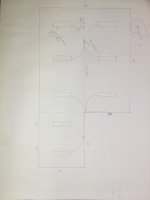Max Headroom
Senior Member
- Location
- Claremont CA 91711
- Occupation
- General Building Contractor/Electrical Contractor
Hi everybody, I'm bidding a small lighting job and need some help, 410.62C1 say it's ok to cord connect the luminaire if it's located directly below the outlet,
Does this mean I will need to hard wire my lights? These are the luminaires we are considering, thank you https://www.homedepot.com/p/EnviroLite-4-ft-T8-LED-White-Shop-Light-SL602T1850-K/300380394

Does this mean I will need to hard wire my lights? These are the luminaires we are considering, thank you https://www.homedepot.com/p/EnviroLite-4-ft-T8-LED-White-Shop-Light-SL602T1850-K/300380394



